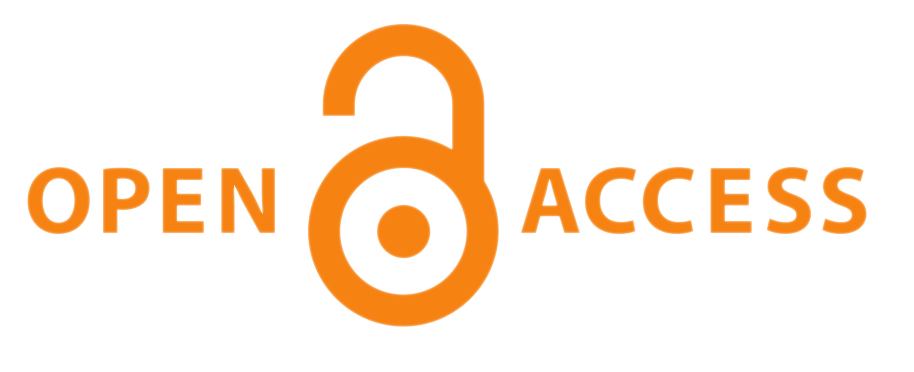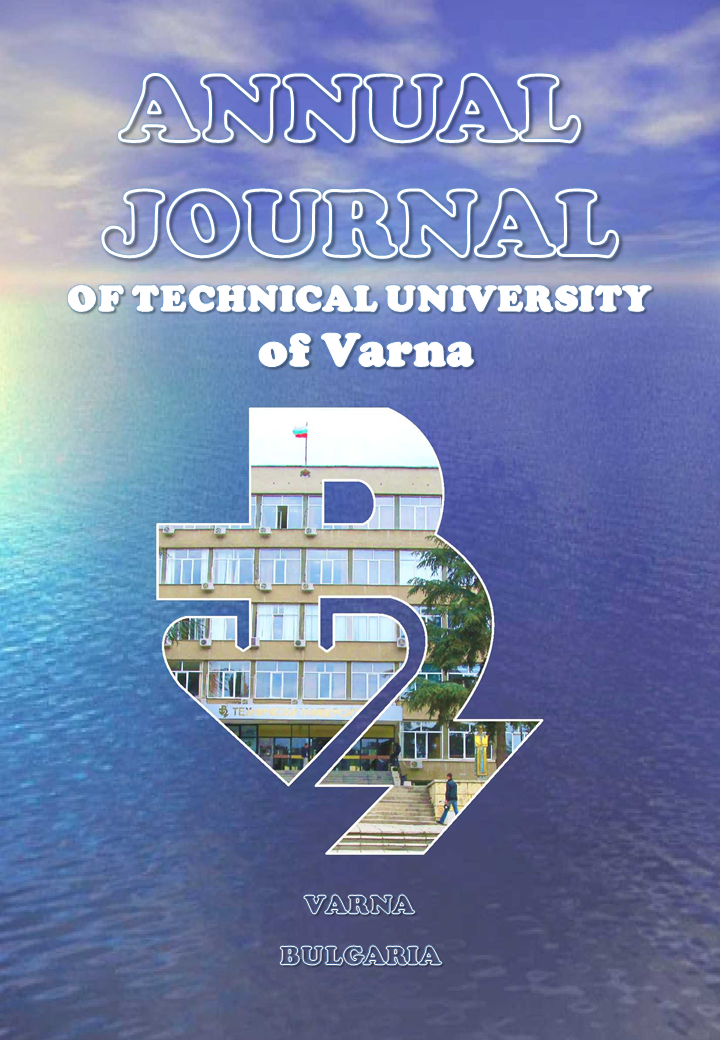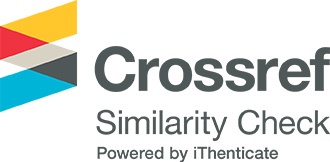Model for Research into the Factors Influencing the Effective Planning and Management of Production Capacity
##semicolon##
https://doi.org/10.29114/ajtuv.vol5.iss1.237##semicolon##
effective planning and management##common.commaListSeparator## production capacity##common.commaListSeparator## factors##common.commaListSeparator## self-interaction matrix##common.commaListSeparator## interpretive##common.commaListSeparator## structural modelingАбстракт
In today's dynamic business environment, the success and competitiveness of any production organization is ensured by continuous improvement, sustainable development, effective planning and management. There is a growing scientific interest in the importance and relevance of production management in view of the strong need to redefine the policies and priorities within the respective strategic plan for business development - with increased focus on capacity planning in order for the industrial enterprises to adapt successfully to the dynamically changing conditions of the global environment and intense competition. Accordingly, full advantage is taken from the ample opportunities to study the impact of a number of factors on capacity planning and management. Based on an in-depth literature analysis, interviews and surveys, selected were 18 key factors that have a profound influence on the effective planning and capacity management of the production organization. Using the relationship between each of these factors and the capacity management is closely examined by applying the method of Interpretive Structural Modeling (ISM). Additionally, the interrelationships between the key factors under study are further analyzed by means of a Structural self-interaction matrix (SSIM).
Изтегляния
##submission.citations##
<p>Attri, R., Dev, N., Sharma, V. (2013). Interpretative Structural Modelling (ISM) approach: An Overview, <em>Res. J. Management Sci</em>.,<em> 2319</em>(2), 1171.<br /><a href="https://scholar.google.com/scholar?hl=bg&as_sdt=0%2C5&q=Attri%2C+R.%2C+Dev%2C+N.%2C+Sharma%2C+V.+%282013%29.+Interpretative+Structural+Modelling+%28ISM%29+approach%3A+An+Overview%2C+Res.+J.+Management+Sci.%2C+2319%282%29%2C+1171.&btnG=" target="_blank">Google Scholar</a></p>
<p>Chase, R.B. & Zhang, A (1998), "Operations management: internationalization and interdisciplinary integration", <em>International Journal of Operations & Production Management</em>, <em>18</em><em>(</em>7), 663-667. <br /> <a href="https://doi.org/10.1108/01443579810217648" target="_blank">Crossref</a></p>
<p>Dima, I. C. (Ed.). (2013). <em>Industrial production management in flexible manufacturing systems</em>. IGI Global. (pp 41-45).<br /> <a href="https://doi.org/10.4018/978-1-4666-2818-2" target="_blank">Crossref</a></p>
<p>Frost, P. J., Moore, L. F., Louis, M. R. E., Lundberg, C. C., & Martin, J. E. (1985). <em>Organizational culture</em>. Sage Publications, Inc.<br /><a href="https://scholar.google.com/scholar?hl=bg&as_sdt=0%2C5&q=Frost%2C+P.+J.%2C+Moore%2C+L.+F.%2C+Louis%2C+M.+R.+E.%2C+Lundberg%2C+C.+C.%2C+%26+Martin%2C+J.+E.+%281985%29.%C2%A0Organizational+culture.+Sage+Publications%2C+Inc.&btnG=" target="_blank">Google Scholar</a></p>
<p>Gupta, S., & Starr, M. K. (2014). Production and operations management systems. Boca Raton, FL: CRC Press. (pp 134-136). <br /><a href="https://doi.org/10.1201/b16470" target="_blank">Crossref</a></p>
<p>Krishnaswamy, K. N., Sivakumar, A. I., & Mathirajan, M. (2006). <em>Management research methodology: Integration of principles, methods and techniques</em>. Pearson Education India. (pp 91-92).<br /><a href="https://scholar.google.com/scholar?hl=bg&as_sdt=0%2C5&q=Krishnaswamy%2C+K.+N.%2C+Sivakumar%2CA.+I.%2C+Mathirajan%2C+M.+%283th+edition%2C+2009%29.+Management+Research+Methodology%3A+Integration+of+Principles%2C+Methods+and+Techniques.+%28pp+91-92%29.&btnG=" target="_blank">Google Scholar</a></p>
<p>Makedonska, D., Dimitrov, Iv. (1997). <em>Production Management</em>. Varna. (pp 75- 78).</p>
<p>Nel, W. (2<sup>nd</sup> ed., 2006). <em>Management for engineers, technologists and scientists</em>. Juta and Company Ltd.<br /><a href="https://scholar.google.com/scholar?hl=bg&as_sdt=0%2C5&q=Nel%2C+W.+%282nd+ed.%2C+2006%29.+Management+for+engineers%2C+technologists+and+scientists.+Juta+and+Company+Ltd.&btnG=" target="_blank">Google Scholar</a></p>
<p>Panayotova, T. (2004). <em>Modeling of organizational relations in the development of complex project tasks in the conditions of Competitive Engineering</em>. Abstract of a PhD dissertation</p>
<p>Sage, A. (1977). <em>Interpretive Structural Modelling: Methodology for Large-scale Systems</em>. New York, NY: Mc Graw-Hill, pp 91-164. <br /><a href="https://scholar.google.com/scholar?hl=bg&as_sdt=0%2C5&q=Sage%2C+A.+%281977%29.+Interpretive+Structural+Modelling%3A+Methodology+for+Large-scale+Systems.+New+York%2C+NY%3A+Mc+Graw-Hill%2C+pp+91-164.%C2%A0%C2%A0&btnG=" target="_blank">Google Scholar</a></p>
<p>Schimitzek, P. (2004). <em>The Efficient Enterprise: Increased Corporate Success with Industry-Specific Information Technology and Knowledge Management</em>. CRC Press.<br /><a href="https://scholar.google.com/scholar?hl=bg&as_sdt=0%2C5&q=Schimitzek%2C+P.+%282004%29.+The+Efficient+Enterprise%3A+Increased+Corporate+Success+with+Industry-Specific+Information+Technology+and+Knowledge+Management.+CRC+Press.&btnG=" target="_blank">Google Scholar</a></p>
<p>Sharpe, M.E. (1979). <em>Problems of Economics</em>. (pp 4-5).</p>
<p>Swamidass, P. M. (Ed.). (2000). <em>Encyclopedia of production and manufacturing management</em>. Springer Science & Business Media. <br /><a href="https://doi.org/10.1007/1-4020-0612-8" target="_blank">Crossref</a></p>
<p>Bartels, J., Peters, O., de Jong, M., Pruyn, A., & van der Molen, M. (2010). Horizontal and vertical communication as determinants of professional and organisational identification. <em>Personnel Review</em>.<br /> <a href="https://doi.org/10.1108/00483481011017426" target="_blank">Crossref</a></p>
<p>Behl, A., & Pal, A. (2020). Interpretive Structural Modeling: Background, Concepts, and Application. In <em>Multi-Criteria Decision Analysis in Management</em> (pp. 1-27). IGI Global.<br /> <a href="https://doi.org/10.4018/978-1-7998-2216-5.ch001" target="_blank">Crossref</a></p>
<p>Brönner, M., Wolff, S., Jovanovic, J., Keuthen, K., & Lienkamp, M. (2020). Production Strategy Development: Simulation of Dependencies Using Recurrent Fuzzy Systems. <em>Systems</em>, <em>8</em>(1), 1.<br /><a href="https://doi.org/10.3390/systems8010001" target="_blank">Crossref</a></p>
<p>Burns, O. M., Turnipseed, D., & Riggs, W. E. (1991). Critical success factors in manufacturing resource planning implementation. <em>International Journal of Operations & Production Management</em>.<br /><a href="https://scholar.google.com/scholar?hl=bg&as_sdt=0%2C5&q=Burns%2C+O.+M.%2C+Turnipseed%2C+D.%2C+%26+Riggs%2C+W.+E.+%281991%29.+Critical+success+factors+in+manufacturing+resource+planning+implementation.+International+Journal+of+Operations+%26+Production+Management.&btnG=" target="_blank">Google Scholar</a></p>
<p>DuBrin, A. J. (8<sup>th</sup> ed. 2008). <em>Essentials Of Management</em>. Cengage Learning, USA</p>
<p>Olhager, J. (2013). Evolution of operations planning and control: from production to supply chains. <em>International journal of production research</em>, <em>51</em>(23-24), 6836-6843. <br /><a href="https://doi.org/10.1080/00207543.2012.761363" target="_blank">Crossref</a></p>
<p>Radojičić, M., Vasović, J. , Paunović, Vl., & Nesic, Z. (2016). An analysis of capacity utilization in industrial production in function of rational resource use.<br /><a href="https://doi.org/10.5937/IMK1603091R" target="_blank">Crossref</a></p>
<p>Shimizu, K., & Hitt, M. A. (2004). Strategic flexibility: Organizational preparedness to reverse ineffective strategic decisions. <em>Academy of Management Perspectives</em>, <em>18</em>(4), 44-59.<br /><a href="https://doi.org/10.5465/ame.2004.15268683" target="_blank">Crossref</a></p>
<p>Umble, E. J., Haft, R. R., & Umble, M. M. (2003). Enterprise resource planning: Implementation procedures and critical success factors. <em>European journal of operational research</em>, <em>146</em>(2), 241-257. <br /><a href="https://doi.org/10.1016/S0377-2217(02)00547-7" target="_blank">Crossref</a></p>
<p>Wasif, S. M. (June 11, 2016). Standards Of Top Management Commitment. eLearning Industry. Retrieved May 21, 2016 from <a href="https://elearningindustry.com/standards-top-management-commitment">https://elearningindustry.com/standards-top-management-commitment</a>.</p>
<p>Winroth, M., Säfsten, K., Lindström, V., Frohm, J., & Stahre, J. (2006). Automation strategies–refinement of manufacturing strategy content. In <em>Proceeding of 17th Annual Conference of POMS: The new world uncertainties, Boston, MA, April.</em><br /><a href="https://scholar.google.com/scholar?hl=bg&as_sdt=0%2C5&q=Winroth%2C+M.%2C+S%C3%A4fsten%2C+K.%2C+Lindstr%C3%B6m%2C+V.%2C+Frohm%2C+J.%2C+%26+Stahre%2C+J.+%282006%29.+Automation+strategies%E2%80%93refinement+of+manufacturing+strategy+content.+In%C2%A0Proceeding+of+17th+Annual+Conference+of+POMS%3A+The+new+world+uncertainties%2C+Boston%2C+MA%2C+April.&btnG=" target="_blank">Google Scholar</a></p>
<p>Schmitt, T. G., Berry, W. L., & Vollmann, T. E. (1984). An analysis of capacity planning procedures for a material requirements planning system. Decision Sciences, 15(4), 522-541. <br /><a href="https://doi.org/10.1111/j.1540-5915.1984.tb01240.x" target="_blank">Crossref</a></p>
##submission.downloads##
Публикуван
##submission.howToCite##
Брой
Раздел (Секция)
##submission.license##
СПОРАЗУМЕНИЕ ЗА ПУБЛИКУВАНЕ
Годишника на Технически университет - Варна (ГТУВ) цели да гарантира, че постъпващите статии се публикуват, като същевременно се предоставя значителна свобода на публикуващите ги автори. За изпълнение на тази цел, ГТУВ поддържа гъвкава политика относно авторските права, което означава, че няма прехвърляне на авторски права от автора на издателя, а авторите запазват изключително авторско право върху интелектуалното си произведение.
При изпращане на статия, Отговорния автор трябва да се съгласи и приеме правилата и условията за публикуване, изложени в настоящото Споразумение за публикуване, които са както следва:
ПРЕДОСТАВЯНЕ НА ПРАВА ОТ ОТГОВОРНИЯ АВТОР
Отговорния автор предоставя на ГТУВ за времето на пълния срок на авторското право и всяко следващо удължаване или подновяване, следното:
• Неотменимо, неизключително право да публикува, възпроизвежда, предоставя, разпространява или по друг начин използва предоставената работа в електронни и печатни издания и в производни произведения в целия свят, на всички езици и във всички известни съществуващи или в последствие възникнали медии.
• Неотменимо, неизключително право да създава и съхранява електронни архивни копия на работата, включително правото да депозира предоставената работа в дигитални хранилища с отворен достъп.
• Неотменимо, неизключително право на лицензиране на други лица да възпроизвеждат, превеждат, преиздават, предоставят и разпространяват предоставената работа при условие, че авторите са надлежно идентифицирани (за момента това се извършва чрез публикуване на произведението под лиценз Creative Commons Attribution 4.0 Unported).
С предоставянето на работата за публикуване, авторските права върху материала остават на авторите. Авторите запазват всички патентни, търговски марки и/или други права върху интелектуалната си собственост.
ЗАДЪЛЖЕНИЯ НА ОТГОВОРНИЯ АВТОР И СЪАВТОРИТЕ
При последващо разпространение или повторно публикуване на предоставената работа, Отговорния автор се съгласява да идентифицира ГТУВ, в който е публикувано произведението като първоначален източник на първото публикуване на работата. Отговорния автор гарантира, че съавторите също ще посочват ГТУВ като източник на първото публикуване, когато разпространяват, преиздават или се позовават на настоящата работа в бъдещи свои публикации.
ГАРАНЦИИ ОТ СТРАНА НА ОТГОВОРНИЯ АВТОР
Отговорния автор гарантира че предоставената за публикуване работа не нарушава никои действащи нормативни разпоредби или законни права на която и да е трета страна. Същия гарантира че работата не съдържа какъвто и да е материал, който може да се възприеме от читателската аудитория като неетичен, компрометиращ, нехуманен, расистки, клеветнически и/или нарушаващ авторски и/или имуществени права, права на интелектуална собственост или поети ангажименти за поверителност към трети страни. Отговорния автор гарантира че предоставеният материал е с оригинално съдържание, не е официално публикуван в никое друго издателство, както и че не е в процес на публикуване пред други издателства. Отговорния автор също така гарантира че притежава съответните правомощия да сключи настоящото споразумение. Ако предоставяната работа е подготвена съвместно с други съавтори, Отговорния автор гарантира че всички останали съавтори са информирани и са съгласни предоставения материал да бъде публикуван в ГТУВ.
Отговорния автор лично (или от името на авторския колектив) дава съгласието си да не въвлича по никакъв начин ГТУВ като страна в каквито и да било научни, академични, административни и/или съдебни спорове, в случаите на установени нарушения на горепосочените декларации и гаранции.
ПРАВА И ЗАДЪЛЖЕНИЯ НА ГТУВ
ГТУВ се съгласява да публикува предоставения материал, в случаите когато същия отговаря напълно на всички необходими качествени, технически и редакционни изисквания, като го идентифицира еднозначно с авторите му. В следствие на настоящото споразумение, на ГТУВ се предоставя правомощие да упражнява права при необходимост от името на авторите върху трети лица, като например в случаите на установено плагиатство, нарушаване на авторски права и др.
Декларация за поверителност на лични данни
Вашите имена и имейл адреси, въведени в уебсайта на ГТУВ, ще бъдат използвани само и изключително за обявените цели на настоящото списание и няма да бъдат използвани за никакви други цели от издателя или предоставяни на друга - трета страна.
Издателят се задължава да извърши всички необходими действия, цялата предоставена лична информация да остане конфиденциална, в рамките на издателя и да не бъде споделена с външни обекти или субекти, освен ако не е дадено предварително изрично разрешение от собственика на личните данни.
Вашата лична информация няма да бъде обект на продажба, разпространение или публикуване по какъвто и да е начин и под каквато и да е форма.









